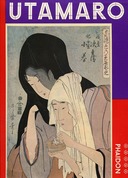
Utamaro - Colour Prints and Paintings
di Hillier J.
Editore: Phaidon Press
Prezzo: € 45,00
Informazioni: introduction by the author. - pp. 162, with 110 illustrations and 17 plates in full colour, London
Stampato: 1961-01-01
Codice: 500000005201
Utamaro is one of the most significant figures in the history of Japanese art, and one who has had an incalculable influence on western artists. Born in 1753, he lived all his life in Edo, a central figure in a culture that was of the people rather than the aristocracy, and whose typical forms of expression were the Kabuki plays, light novelettes, comic verse and colour-woodcuts.
He spans a period during which each of these arts was brought to its point of ultimate achievement, a period, too, of a flux of ideas and the first stirrings of the social and political changes that were to ensue in the nineteenth century.
His work includes designs for some of the loveliest illustrated books in the world, and his broadsheets, at their best, are marked by powers of composition and imaginative design that single him out from all other artists of the colour-print movement. Yet, although in the West he is, next to Hokusai, the best known and admired of Japaneseartists, little outside Japan has been published dealing with his life and work since Kurth's now out-dated monograph of 1907. Mr. Hillier's book is timely, and it fills an unaccountable gap in the literature of the Japanese colour-print.
Like other "Floating World" artists, Utamaro drew his material for the most part from the demi-monde of Edo. The courtesan, alone or With her elegant consorts, figures in countless prints, in brothel or tea-house, in boating parties along the Sumida River, or among the flowering trees in the pleasure-gardens of Edo. The famous "Insect" book, and the no less remarkable "Bird" and "Shell" books, prove his outstanding powers in an entirely different genre.
The author has for many years devoted himself to a study of the work of Japanese artists, and especially of Utamaro. Aided by a generous selection of typical prints, in broadsheet or album form, he traces Utamaro's development as an artist, providing at the same time an approach to the Japanese way of life in the late eighteenth century, as well as to some of the problems of Japanese art generally.
Libro usato disponibile in copia unica
Argomenti: Arte, Giappone, Cultura Giapponese, Pittura,
